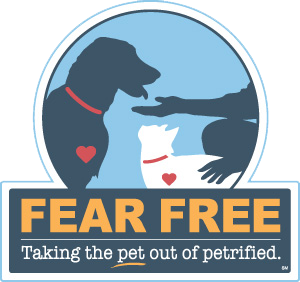Tips For Young Wildlife Care
Every spring we receive and care for young wildlife brought in to us by well intentioned neighbors who believe the animal to be orphaned. Unfortunately many of these animals need not have been rescued and would have had a greater chance of survival if left where they were found.
The natural instinct of young animals to freeze when discovered often make it difficult to distinguish an injured or sick animal from one just waiting for mommy to come back from gathering food. We hope that the following information, recreated from Wildcare, will help you to decide how to handle a found bird, rabbit or squirrel.
1. Leave the animal alone if:
- the parent is nearby. An immature animal’s best chance for
survival is with its parents. It is not unusual for some species to leave their young for several hours while foraging for food. Watch from a hiding place some distance away so the infant and parent are not frightened. Keep children and other animals from disturbing the area.
- the animal is bright-eyed, appears healthy and is in no apparent danger. Observe for a period of time to determine if the animal really needs to be rescued.
2. Rescue if:
- the parent is known to be dead and the baby is too young to care for itself. Keep in mind that baby rabbits are independent at 4 weeks of age or about 4 inches in size.
- the animal is weak, thin and cold or in any way appears to be sick or injured.
- there are flies or insects on or around the animal; this can be a sign of injury.
- the animal is in obvious danger, including problems with other animals.
3. If you decide that the animal needs to be rescued:
- use gloves or a towel to pick the animal up, being careful not to get bit. Remember some mammals can carry Rabies.
- handle the animal as little as possible, many orphaned or injured wildlife will die simply from stress or fear.
- place the animal in a secure and safe box with air holes.
- if you cannot take the animal to a veterinary hospital or a rescue center immediately, place a hot water bottle wrapped in a cloth in the box for warmth and place the box in a dark, warm and quiet place.
- do not feed or offer water to the animal unless instructed to do so by a qualified person.
- never transport wild birds in a bird cage. They may damage their feathers on the bars while attempting to escape.
Birds:
 An immature bird’s best chance for survival is with its parents. A chick fallen out of its nest should be placed back in quickly and quietly. If the nest cannot be located, a young bird that is warm, active and chirping will be found by the parents and they will continue to care for it. A weak and cold bird should be warmed and placed in a nesting box lined with tissue paper, and placed back were it was found for the parents to find it. If it is near dark, keep the bird warm and dry overnight and place it back out again at dawn.
An immature bird’s best chance for survival is with its parents. A chick fallen out of its nest should be placed back in quickly and quietly. If the nest cannot be located, a young bird that is warm, active and chirping will be found by the parents and they will continue to care for it. A weak and cold bird should be warmed and placed in a nesting box lined with tissue paper, and placed back were it was found for the parents to find it. If it is near dark, keep the bird warm and dry overnight and place it back out again at dawn.
Nesting boxes should be small, have drainage and high sides to avoid the young bird from falling out again. Line the nesting box with tissue or paper towel. Avoid fabric with loose threads or green grass (it contains too much moisture). Small plastic strawberry cartons make the best nesting boxes. Wood or cardboard boxes hold water and dampness.
Rabbits:
 Often rabbits will build their nests in tall grass or under shrubs that become disturbed by other animals, children or lawn mowers. Stress can be fatal to rabbits, so handle them as little as possible. Unless the young rabbit appears to be injured, it should be left in its hiding place or put back in the nest, if it can be located. The mother rabbit will return at night to feed her young.
Often rabbits will build their nests in tall grass or under shrubs that become disturbed by other animals, children or lawn mowers. Stress can be fatal to rabbits, so handle them as little as possible. Unless the young rabbit appears to be injured, it should be left in its hiding place or put back in the nest, if it can be located. The mother rabbit will return at night to feed her young.
Better yet, contact The Toronto Wildlife Centre at 416-631-0662 or visit their website www.torontowildlifecentre.com for advice before handling any wild animals.
Follow Us On 

FUNFACT:
French poodles did not originate in France. Poodles were originally used as hunting dogs in Europe. The dogs’ thick coats were a hindrance in water and thick brush, so hunters sheared the hindquarters, with cuffs left around the ankles and hips to protect against rheumatism. Each hunter marked his dogs’ heads with a ribbon of his own color, allowing groups of hunters to tell their dogs apart.






